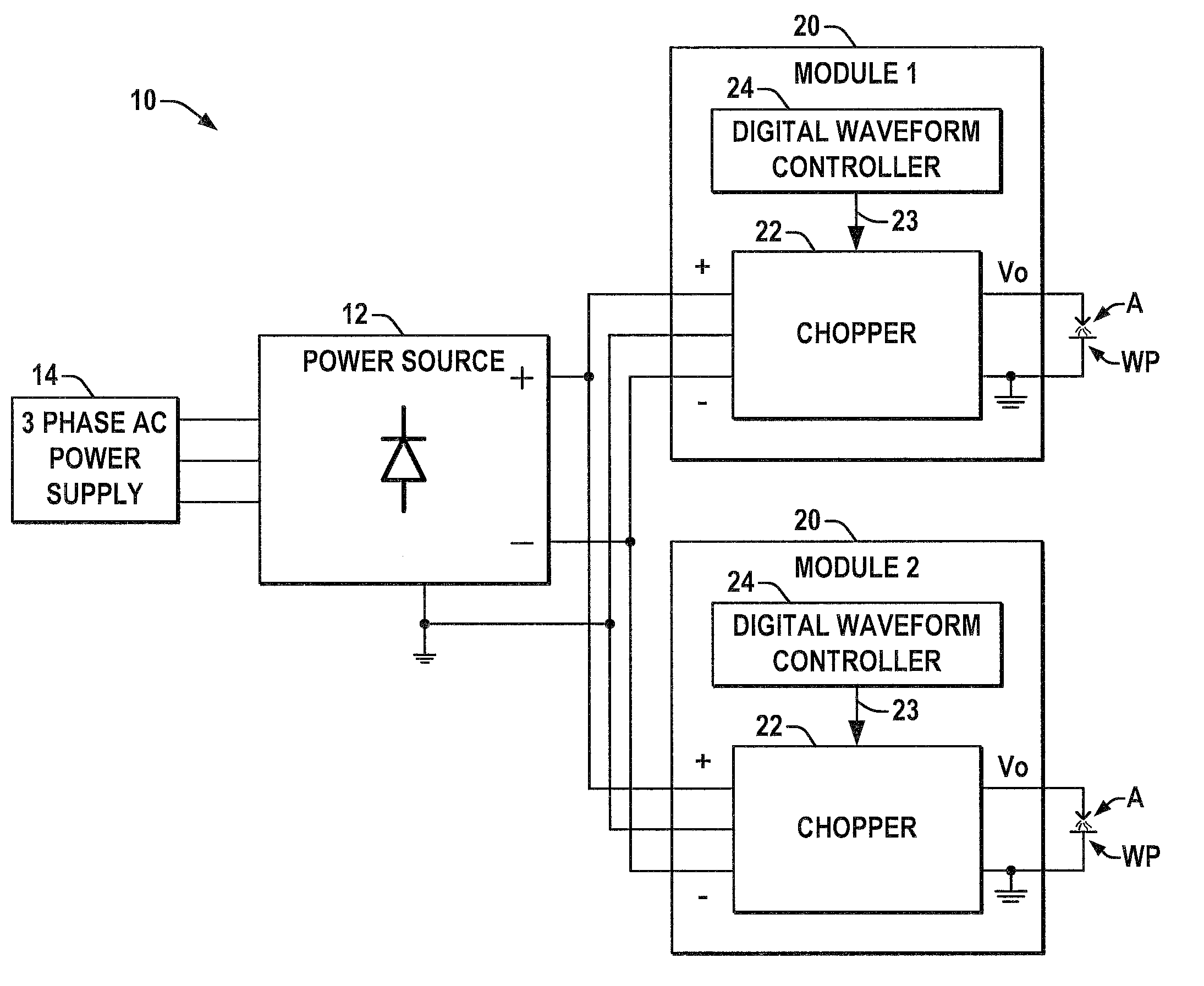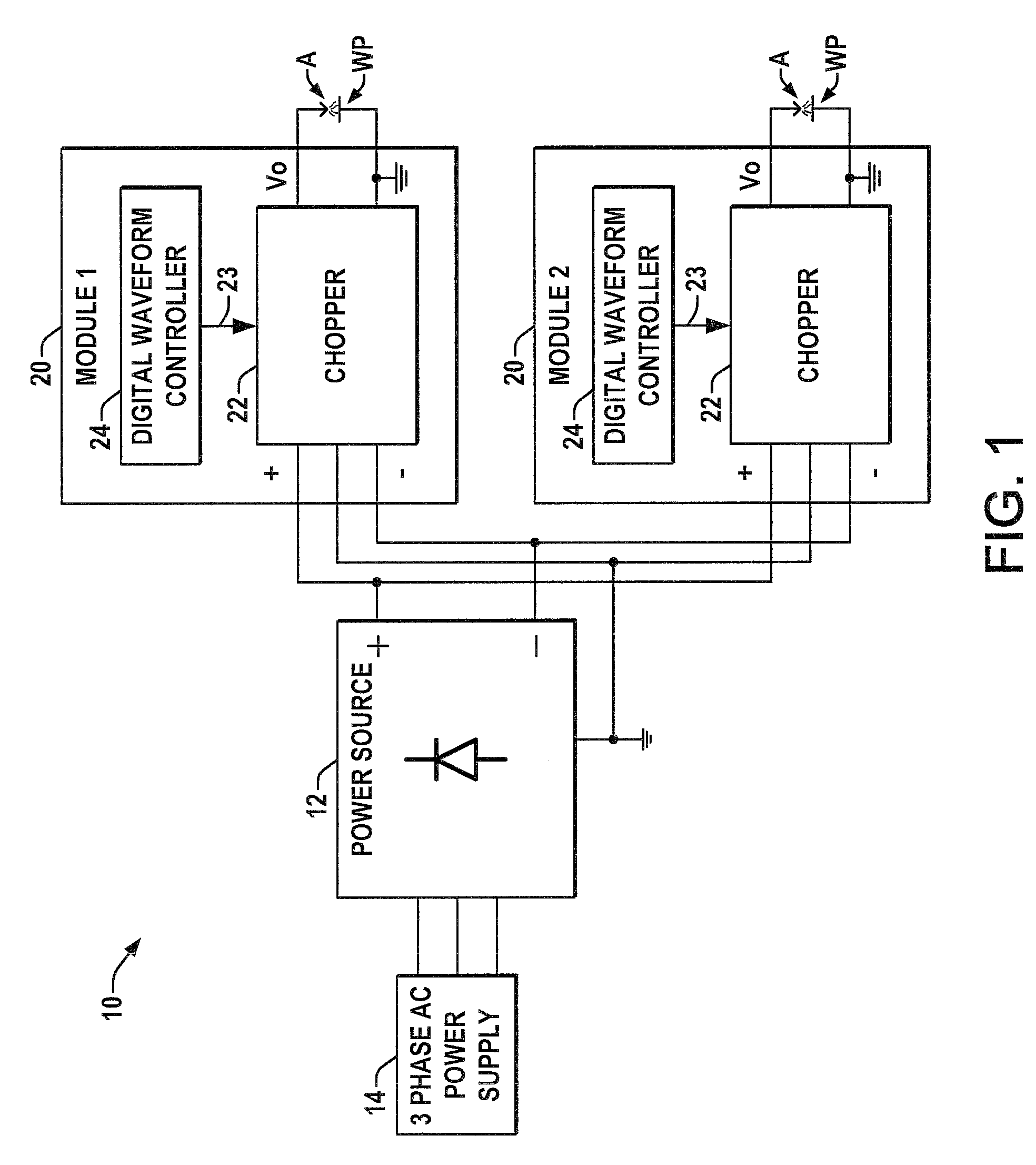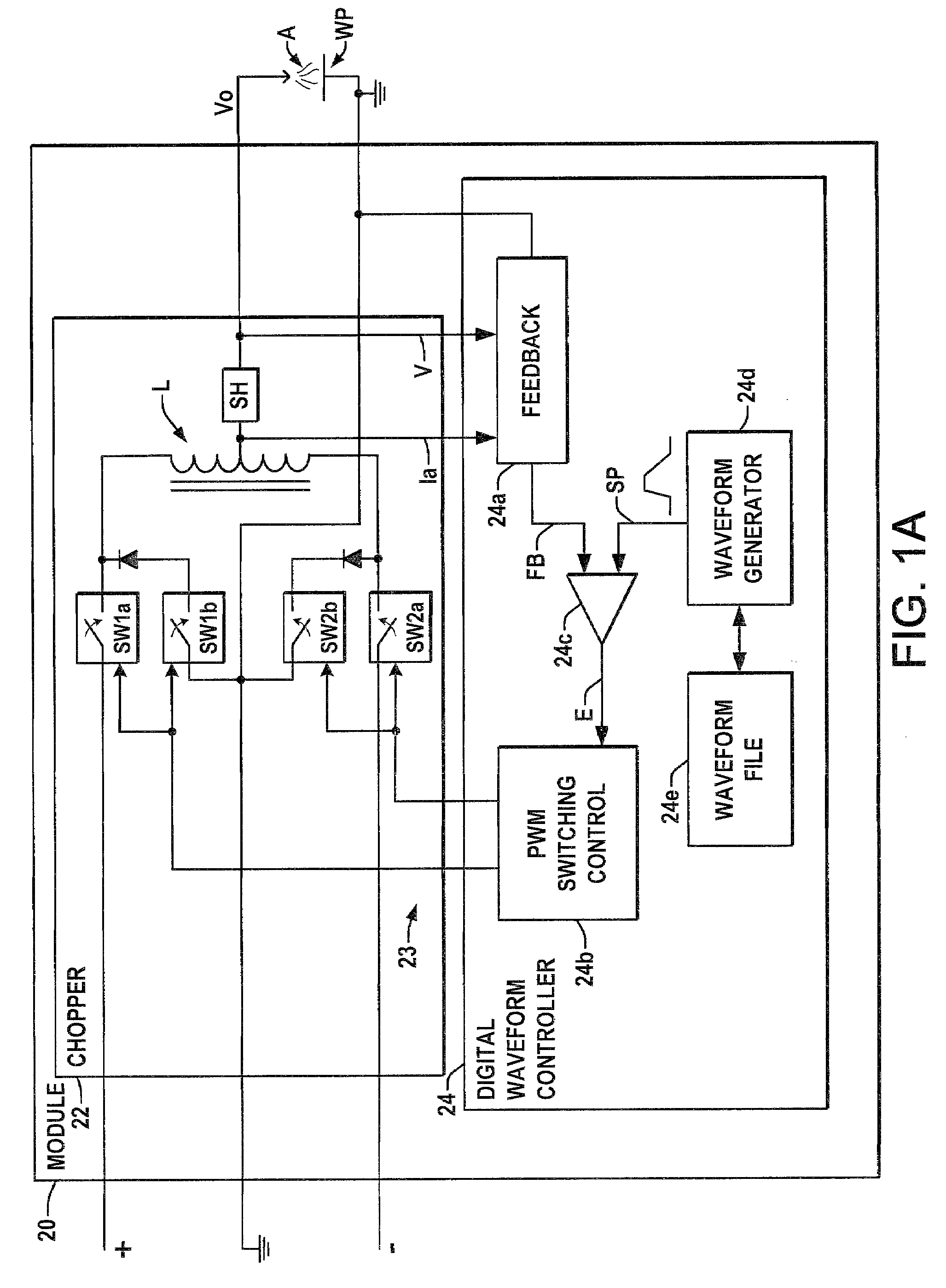[0005]A summary of one or more aspects of the invention is now presented in order to facilitate a basic understanding thereof, wherein this summary is not an extensive overview of the invention, and is intended neither to identify certain elements of the invention, nor to delineate the scope of the invention. Rather, the primary purpose of the summary is to present some concepts of the invention in a simplified form prior to the more detailed description that is presented hereinafter. The present invention is related to programmable portable welding equipment that may facilitate the provision of distributed welding systems with advanced waveform control capabilities, where the apparatus may be easily reconfigured and relocated to support multiple welding operation types with maximum adaptability to changing worksite situations, by which the above-mentioned and other shortcomings of conventional welders can be mitigated or overcome. The invention contemplates the use of a single power source to convert supplied AC electrical power to an isolated DC signal or bus, together with two or more lightweight down-chopper type power converter modules, which include digital controllers providing switching control signals to the choppers to regulate the current provided to the respective welding processes. In this manner, the invention provides the advanced control and programmability advantages of modern stand-alone welders along with the portability and power distribution advantages of distributed welding systems in situations where AC power is not distributed around a welding site. The systems enabled by the present invention are therefor easily adaptable to changing welding site work requirements, where additional portable welding modules can be added to provide additional digitally controlled welding arcs as needed, limited only by the DC current capabilities of the DC power source. The invention thus facilitates provision of modular building blocks in advanced welding systems, allowing production managers and other welding professionals to configure an unlimited number of different systems according to a given welding production specification using modular digitally controlled welder “machines” that can be standardized for production, maintenance, and inventory reasons, with the capability to simply add another machine for each new arc required.
[0006]In accordance with one or more aspects of the invention, a welding system is provided, which allows performance of multiple welds through creation of a plurality of welding arcs and welding signals therefor, without requiring AC supply power at the location of each welding operation. The system includes two or more chopper-based welding modules and a power source that receives AC input power and provides a first DC output signal to the chopper modules. A first welding module includes a chopper DC-DC switching converter, which receives the first DC output signal and provides a first signal waveform suitable for welding comprised of a series of pulses that define the first waveform to establish a first welding arc according to a pulse width modulated (PWM) first switching signal. The module further includes a digital waveform controller providing the PWM signal to the chopper according to a desired first waveform. The system also includes one or more additional welding modules individually comprising a digital waveform controller and a chopper receiving the first DC output signal from the power source and providing a welding signal waveform according to a PWM signal from the associated digital controller. One or more of the welding modules may be coupled with additional components in the system, which components may be integrated into the chopper module, such as a short circuit welding control module that senses an anticipated metal breaking fuse condition in a short circuit welding process and controls the welding signal accordingly, and / or a polarity switching circuit to facilitate AC welding or different welding operations requiring different electrical current polarities. In other embodiments, the system may include a synchronizing controller that synchronizes the digital waveform controllers, where the synchronizing controller may be integrated into one of the welding modules. In one implementation, the chopper welding modules can provide rated maximum output currents of about 300 amps or more while still being portable, wherein the welding modules in one example weigh about 100 pounds or less, thereby facilitating ease of relocation and system reconfiguration.
[0008]In accordance with yet another aspect of the invention, a welding chopper module is provided for converting an input DC signal to a welding signal for performing a welding process. The module is comprised of a chopper, with a DC input and a switching circuit for providing a first electrical welding signal waveform according to a pulse width modulated signal, as well as a digital waveform controller providing the PWM signal according to a desired waveform. In one embodiment, the module is capable of providing maximum rated currents of about 300 amps or more, and is lightweight, having a weight under about 100 pounds. A synchronizing controller may be integrated in the module to synchronize the internal digital waveform controller with another digital waveform controller, such as that of another similar chopper module. In another embodiment, the module further includes a second chopper having an input for receiving a DC signal from an external power source, and a switching circuit, as well as a corresponding digital waveform controller for providing a second welding signal waveform, with the synchronizing controller being adapted to synchronize the first and second digital waveform controllers of the module.
 Login to View More
Login to View More 


